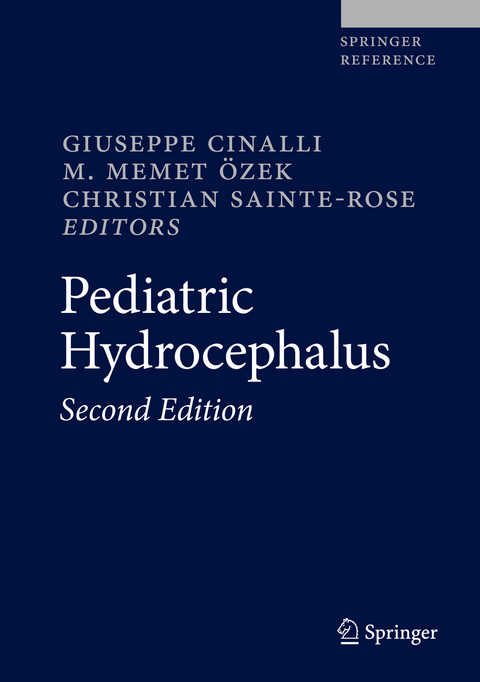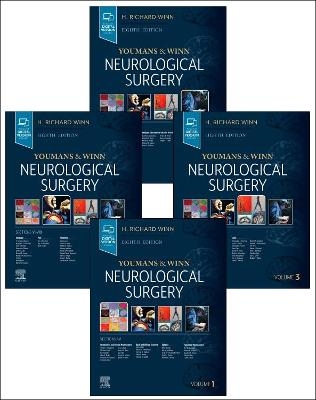
Pediatric Hydrocephalus
Springer International Publishing
978-3-319-27248-1 (ISBN)
Since the first edition of this book, the impressive development of neuroendoscopy has dramatically changed the surgical approach to hydrocephalus, the main pathology pediatric neurosurgeons worldwide have to deal with. This revised and updated second edition, written by worldwide leaders in the field, fully reflects this progress: not only existing chapters have been reviewed whenever required, but new ones have been added thus taking into consideration every aspect of hydrocephalus, even when associated with the rarest pathologies. The general part include now more data on history, biomechanics, circulation and molecular basis. Special consideration for fetal surgery has been added, whereas the section on neonatal hydrocephalus has been further developed. Section 4, on the different pathologies associated with hydrocephalus, has been significantly expanded. and is now amazingly detailed, as well as the section on shunt treatment. Infections are now dealt with in two different chapters, and special attention to shunt complications (the nightmare of every Pediatric Neurosurgeon.) is paid in five different chapters. A very complete overview of the endoscopic treatment, that will surely draw the reader's attention thanks to the wonderful full color images, is also included. Written by acknowledged experts in the field, this title is an indispensable tool for all those facing this pathology in their daily practice.
Giuseppe Cinalli was born in Naples on June 16, 1961. He completed the secondary school in Naples and the medical studies at the “Federico II” University of Naples (1980–1986). He started the residency program in Neurosurgery on April 1, 1987, at the “Federico II” University of Naples, but he was rapidly attracted by the Pediatric Neurosurgery, so he asked and obtained to complete his residency at the Department of Pediatric Neurosurgery of the Hôpital Necker-Enfants Malades in Paris, France, directed by Professor Jean François Hirsch, with grants from French Government and the Italian Ministry of Public Instruction (Ministero della Pubblica Istruzione). He completed his residency in October 1991 and continued to work in Necker as assistant attaché. He married Fabrizia in 1991 and they had Francesco and Maria Allegra. In 1993, he spent 5 months as visiting fellow in the Department of Pediatric Neurosurgery at the New York University Medical Center directed by Fred Epstein and 3 months in the Department of Pediatric Neurosurgery at the Primary Children’s Medical Center of Salt Lake City directed by Marion “Jack” Walker. On November 1, 1993, he started his university career in France first as chef de clinique-assistant (1993–1997) and later as praticien hospitalouniversitaire (1997–1998), before deciding to go back to Italy. He then worked in Terni (1998–1999) and in Naples at the Department of Pediatric Neurosurgery, Santobono-Pausilipon Children’s Hospital, directed by Dr. Giuseppe Maggi, where he started to work in October 1999. He became chief of the Department of Pediatric Neurosurgery on April 1, 2007, and head of the Department of Neurosciences in July 2016. He is active member of 7 scientific societies, editor of 3 books, and founding member in 2001 of the International Study Group of Neuroendoscopy (ISGNE), later transformed into International Federation of Neuroendoscopy (IFNE) of which he was elected president in November 2017 for a 2-year term, and author of 116 indexed papers.M. Memet Özek was born in Tübingen on November 23, 1956. He did Abitur in German High School of Istanbul and graduated with honors from Istanbul University School of Medicine. He did his residency in Hacettepe University in Ankara followed by his mandatory military service in the Department of Neurosurgery at the Turkish Military Academy in Ankara. In 1989, he started his academic career in Marmara University School of Medicine as an assistant professor. In 1990 and 1991, he was a fellow in the Department of Pediatric Neurosurgery at the New York University Medical Center directed by Fred Epstein. Soon after his return to Istanbul, he established the first independent Division of Pediatric Neurosurgery of his country and became an associate professor. In 1999 he achieved the position of full professor in his department. Between the years 2008 and 2010, he was the president of the European Society for Pediatric Neurosurgery. In 2011, he moved to Acıbadem University and became the head of the Department of Neurosurgery in 2018. He is an active member of 8 scientific societies, editor of 4 books, and author of 105 indexed papers. He joined 82 neurosurgery courses as a member of the faculty and organized 18 courses on different topics of pediatric neurosurgery in his own institution to educate young neurosurgeons of his geographical region. He is married to Prof. Dr. Eren Özek and is the father of Ceren Ozek Moore, Ph.D. Besides his career in neurosurgery, he is a dive master and an enthusiastic collector of Anatolian carpets and seashells.Christian Sainte-Rose was born in Fort-de-France (Martinique) in 1949. He attended school in Martinique and then moved to Grenoble, France, where he graduated in the medical school and had his first contact with Neurosurgery. During the last years of his medical school, he started to build a boat that was complete at the time of his graduation, with which he spent a sabbatical year cruising in the Mediterranean. On land again, he started his residency in Neurosurgery in Dakar, Senegal, where he spent 4 years learning Neurosurgery before going back to France, where he was recruited by Jean François Hirsch in 1978 in the Department of Pediatric Neurosurgery at Necker-EnfantsMalades Hospital in Paris. After a few years, he spent 6 months of research fellowship at the Hospital for Sick Children in Toronto, Canada, in the department directed by Harold Hoffman. He concentrated his early interest of research on the mechanical complications of cerebrospinal fluid valves, writing a seminal paper on the long-term functioning of ventriculoperitoneal shunts, analyzing a series of several hundreds of patients treated over years in Paris and Toronto, describing for the first time the different modalities of shunt dysfunction. As a natural consequence, he directed his research to the creation of a different kind of valve, intended to reduce the CSF overdrainage and itsconsequences. At the same time, he pioneered many neuroendoscopic techniques, participated in the first robotic microscope project, designed several surgical instruments (subdural catheter, dumbbell catheter for neuroendoscopy), hosted in Paris in 1995 one of the very first meetings on minimally invasive neurosurgery, and wrote seminal papers on virtually every aspect of pediatric neurosurgery. He became chief of the Department of Pediatric Neurosurgery of Necker-Enfants Malades in 2005 and then moved to Martinique in 2015 where he is working currently.
From the contents: History of Hydrocephalus and of its treatment.- Experimental Hydrocephalus: Models and study Methods.- Genetics of hydrocephalus .- Development of the cerebrospinal fluid pathways during embryonic and fetal life in humans.- Anatomy and histology of cerebral and spinal meninges.- The choroid plexus.- CSF circulation.- CSF hydrodynamics.- Molecular basis of Hydrocephalus.- Biomechanics of Hydrocephalus.- Pathology of Hydrocephalus.- Radiology of Hydrocephalus.- Classification and definition of Hydrocephalus.- Clinic of Hydrocephalus.-Prenatal Hydrocephalus.- Post haemorrhagic hydrocephalus in prematures.- Post haemorrhagic hydrocephalus in prematures.- Post haemorrhagic hydrocephalus in prematures.- Hydrocephalus and Myelomeningocele.- Hydrocephalus associated with cerebral malformations.- Hydrocephalus in posterior fossa tumors.- Hydrocephalus in suprasellar and basal ganglia tumors.- Hydrocephalus in pineal and tectal tumors.- Hydrocephalus and colloid cysts.- Hydrocephalus and spinal tumors.- Post-infectious Hydrocephalus.- Hydrocephalus in developing countries.- Multiloculated Hydrocephalus.- Hydrocephalus and Parasitosis.- Hydrocephalus and Dandy-Walker malformation.- Hydrocephalus and aqueductal stenosis.- Extraventricular intracisternal obstructive hydrocephalus.- Hydrocephalus and arachnoid cysts.- Hydrocephalus in Achondroplasia and venous hypertension.- CSF Hydrodynamics in Craniosynostosis.- Hydrocephalus and Neurofibromatosis.- Hydrocephalus and malformations of Cranio cervical junction.- Hydrocephalus and vein of Galen Malformation.- Post-traumatic Hydrocephalus.- Post tubercular Hydrocephalus.- Fetal surgery.- ICP Monitoring: Indications, Techniques, interpretation.- CSF hydrodynamics applied to the CSF shunt design.- Shunt hardware.- CSF shunt insertion: Surgical techniques.- Mechanical complications in CSF shunts.- CSF shunt infection.- Abdominal complications in shunts.- Slit ventricle syndromes.- Endoscopic anatomy.- Third Ventriculostomy.- Third Ventriculostomy and Choroid Plexus Coagulation.- Aqueductoplasty and Aqueductal stenting.- Septostomy and complex procedures.- Third ventriculostomy in shunt malfunction.- Radiological assessment before and after endoscopic third ventriculostomy .- Complications of third ventriculostomy.- Obstruction of third ventriculostomy.- Outcome analysis.- ETV under 2 years in Triventricular hydrocephalus.- Long term evaluation and QOL assessment of hydrocephalus outcome.- Growth and puberty in Hydrocephalus.- Hydrocephalus and Epilepsy.- Rehabilitation for hydrocephalic children.- Transitional care in pediatric neurosurgical patients.- Benign pericerebral collections in infants.- Syringomyelia in pediatric age.- Benign intracranial Hypertension in children.
| Erscheint lt. Verlag | 8.5.2019 |
|---|---|
| Zusatzinfo | XXXIV, 1766 p. 956 illus., 461 illus. in color. In 2 volumes, not available separately. |
| Verlagsort | Cham |
| Sprache | englisch |
| Maße | 178 x 254 mm |
| Themenwelt | Medizinische Fachgebiete ► Chirurgie ► Neurochirurgie |
| Schlagworte | Brain malformation • Cerebrospinal Fluid • Endoscopic third ventriculostomy • Medicine • Neuroendoscopy • Neurology • Neuroradiology • Neurosciences • neurosurgery • Pediatrics • Shunts |
| ISBN-10 | 3-319-27248-9 / 3319272489 |
| ISBN-13 | 978-3-319-27248-1 / 9783319272481 |
| Zustand | Neuware |
| Informationen gemäß Produktsicherheitsverordnung (GPSR) | |
| Haben Sie eine Frage zum Produkt? |
aus dem Bereich
